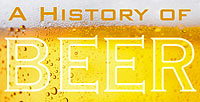Contemporary popular culture is as jejune as contemporary politics: strangled by political correctness and by contempt for form and etiquette, it eats away like acid at what remains of courtesy and memory. But the past of popular culture – in literature and the movies – has much nourishment to offer. One of the most popular authors of the Twentieth Century, Edgar Rice Burroughs (1875 – 1950), had a keen intuition about the health of the body politic and the positive relation of a vital culture to its founding traditions. The Author of
Tarzan (1912) and its many sequels, the inventor of the extraterrestrial sword-and-sandals romance, ex-cavalryman, admirer of the Apache and the Sioux, anti-Communist, anti-Nazi, self-publishing millionaire entrepreneur, religious skeptic, “Big-Stick” patriot, Southern California real estate baron, sixty-year-old Pacific-Theater war correspondent, Burroughs has, with a few ups and downs, maintained an audience both from his authorial debut in 1912 to the present day, nearly sixty years after his death. Burroughs has a place in the culture wars, standing as he does for the opposite of almost everything advocated by the elites of the new liberal-totalitarian order. I offer, in what follows, a modest assessment of Burroughs’ work.
continue reading























